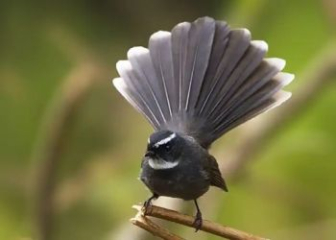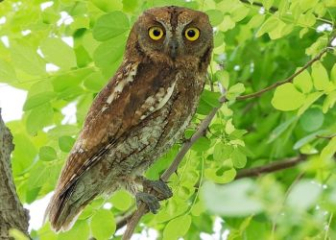Black-rumped Magpie - Ignition technique to help birds sing best
Blog | by
The Black-rumped Magpie (Copsychus saularis), a pet bird with an impressive appearance, beautiful singing voice, and many melodies, is very popular among Vietnamese pet birds.
The Black-rumped Magpie has become a very familiar name to bird lovers in Vietnam. This bird species not only possesses an impressive appearance with contrasting black and white feathers, a lively and agile temperament, but also has an excellent singing voice with many different melodies.
So do you know how to own a fiery, singing starling? Let's find out the details with nicebirds through the article below!
Information about the Black-rumped Magpie :
|
Scientific name |
Copsychus saularis |
|
Common Name0 |
Black-throated bulbul, black-throated bulbul, ground-throated bulbul, black-throated bulbul,.. |
|
Set |
Passeriformes - Order Passeriformes |
|
Surname |
Muscicapidae - Flycatchers |
|
Spend |
Copsychus - Magpie |
|
Source |
South Asia, Southeast Asia |
|
Size |
About 19 cm (including tail) |
|
Lifespan |
Origin & distribution of the Black-rumped Magpie
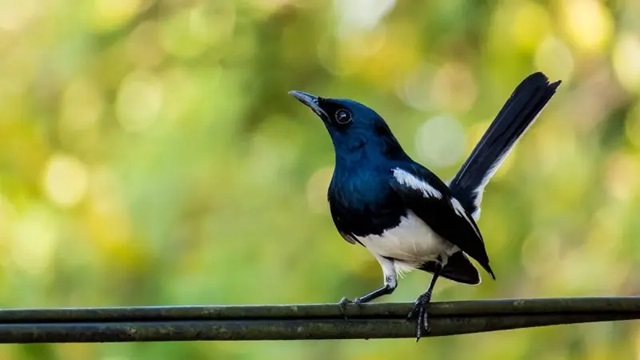
The blackbird is a small bird that sings very beautifully.
The Black-rumped Magpie (scientific name Copsychus saularis), commonly known in Vietnamese as the Black-rumped Magpie, Black-rumped Magpie or Black-rumped Magpie, originates from South Asia and Southeast Asia.
In nature, this bird species is distributed in a number of countries as follows:
- Vietnam Distributed from North to South, common in dense forests, secondary forests and rural areas.
- India, Bangladesh, Nepal, Sri Lanka, Myanmar, Malaysia, China, Indonesia,...
Black-rumped shamas often live in dense forests, bamboo forests, open forests, gardens, parks and even suburban areas, where there are many shrubs, abundant food sources and convenient for nesting.
Appearance of the Magpie

The striking appearance of a starling.
The black-throated bulbul is a bird with a very special appearance, easily recognizable thanks to its contrasting plumage and agile appearance. And especially between male and female black-throated bulbuls, there are different characteristics that you can easily recognize with the naked eye. Let's find out now!
Size and shape:
- Length : About 19 cm (including tail).
- Weight: From 25 - 40g
- Eyes : Black, round, big, looks very smart.
- Beak : Pointed, black, slightly curved.
- Gait : Agile, jumping continuously.
- Posture : Usually raises head and raises tail high, when perching it often shakes slightly.
Appearance of male magpie (male bird):
- Fur color : Mainly jet black on the head, neck, back and tail. The chest and belly are pure white, creating a unique contrast.
- Wings : Black with white stripes, very visible when the bird spreads its wings.
- Tail : Long, usually raised, black with white border.
- Beak and feet : Both black.
Appearance of female black-bellied bulbul:
- Feather color: Subdued color, tending towards gray-brown or dark gray. The chest and belly are ivory white, not as bright white as the male bird.
- Wings and tail: Have white bands but lighter in color than the male.
Habits of the Magpie
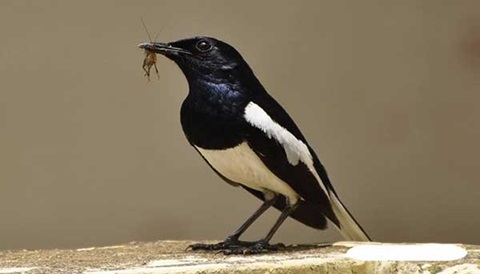
The magpie is holding an insect in its mouth.
The Black-rumped Magpie is considered a very active and lively pet bird, so it also has many interesting habits and behaviors, more outstanding than other birds in the Magpie family. If you want to learn more, don't miss the content below!
Active, dynamic
Black-throated magpies are usually active during the day, especially in the early morning and late afternoon. They often perch on tree branches, then hop from branch to branch or from the ground to high places.
When perching, the bird always raises its head high, raises its tail and shakes it slightly, this is also a typical sign of the black-winged magpie.
Good singing voice and ability to "sing"
The Black-throated Magpie is a pet bird with a very beautiful singing voice, many different sounds and can "imitate" the singing of many other birds. In particular, they also have the ability to "sing dueling" - when they hear other birds singing, they will try to sing back with a louder, more resonant voice to express themselves.
However, the male bird will usually sing more than the female bird. During the breeding season, it will use its song to attract the attention of the female bird and mark its territory.
Highly territorial
The black-throated magpie is highly territorial. Especially the male, they always protect and maintain their own area of activity, not allowing any other male to invade. It can even ruffle its feathers, chase or sing “harshly” to warn and threaten its opponent.
Monogamous reproduction
The Black-crowned Magpie usually breeds from spring to early summer, which falls around March to June. They are very faithful to their mate throughout the breeding season. They usually nest in straw, dry leaves or roots in tree holes, roofs or bushes.
Each clutch of female birds can lay 3 - 5 eggs, the female takes on the task of incubating the eggs while the male goes out to find food and protect the nest.
Like to eat insects
The Black-crowned Magpie is an insectivore. In the wild, it will forage for food on the ground or catch insects in the air. It does not like to eat fruits.
Domestication
Black-throated magpies are only easily tamed when they are young. If raised from a young age, they will become very tame, intelligent and interact very well with their owners.
As for adult birds, it takes a long time for them to get used to it and become more confident.
Ignition technique helps the starling sing the loudest
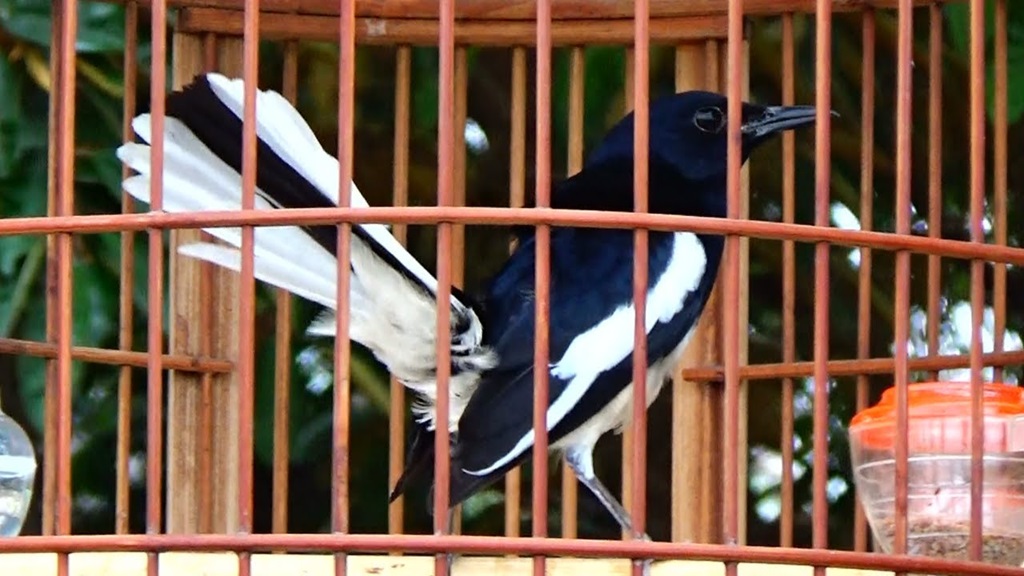
Image of a starling being raised in a cage.
If you want your Blackbird to be energetic and sing beautifully, you need to combine many factors such as living environment, diet, exercise and health care. And right below, we have compiled the most effective ignition techniques compiled from experienced "players", let's find out now!
Provide “hot” nutrition
A key factor to help the starlings to be full of fire and develop best is to provide a suitable diet - increase protein, increase energy by feeding fresh food rich in protein or specialized fire-stimulating bran. Specifically as follows:
Fresh foods rich in protein :
- Caterpillars : Should eat 5 - 10 per day, the purpose is to provide a large amount of protein, strong stimulation.
- Live grasshoppers : 2 - 3 per day, helps the bird sing louder.
- Crickets, cockroaches : Eat alternately 2 times/week.
- Crushed boiled eggs : Eat 1 - 2 times/week.
Specialized ignition sensor :
- Use specialized bird feed with high protein content.
- Only use one type of bran, avoid changing continuously as it will affect the bird's digestive system.
Natural Fire Starter by Sunbathing
In addition to providing a high-protein diet, you can stimulate the bird naturally by sunbathing every day. Sunbathing seems simple, but it helps convert vitamin D3, increase hormones, thereby helping the bird "tighten" faster.
Some notes when sunbathing:
- The ideal time for sunbathing is from 7 to 9 am every day.
- After sunbathing, the bird needs a cool bath to cool down slowly, relax and have time to clean its feathers.
Stimulate singing by practicing voice
Stimulating singing by training the voice of the starling every day is an important and effective factor in helping the bird sing better and more enthusiastically. You can do it in one of the following two ways:
Method 1 - Using audio file :
- Use a recording of another starling's song to play for your bird every day, for 20 - 30 minutes.
- Should be opened early in the morning or cool afternoon, do not open too loud to avoid scaring the birds.
- You can go to Youtube and type in "Best young blackbird singing practice", "Blackbird singing duel" or "strong and beautiful blackbird singing sound" to find the most satisfactory recording files.
Method 2 - Singing from a distance
- Hang your bird near the lit decoy, about 1 - 2 meters away.
- Only let the birds hear each other's voices without seeing each other to avoid scaring the birds.
- After 2 - 3 days, you will see the birds "singing" with each other naturally.
Prepare cage and suitable hanging position
Having a suitable cage and hanging position also greatly affects whether the starling can sing passionately or not. You need to note the following:
- The bird cage must be spacious, airy, with enough light and space for the bird to jump around.
- The cage should be hung in a cool place, away from strong winds, out of reach of animals such as cats and dogs or even children to avoid teasing the starling.
- Regularly clean the cage, water trough, and leftover food every day.
Maintain rest mode
This is a very important factor that helps the starling to maintain its fire most sustainably. You should not “force” it for a long time and continuously. After a few weeks of the bird being in a fire, you need to “cool down” it slowly by reducing the amount of fresh food or contact with decoy birds.
Especially in the stage of the coal-feathered magpie, you should let the bird rest and nourish itself, and not stimulate it to sing at this time.
It can be seen that proper ignition not only helps the blackbird sing better, maintain its form but also can develop well, live long. Wish you apply successfully and have a bird that sings well!
Price list of Blackbirds
If you want to own a Black Starling, you can refer to the updated Black Starling price list in 2025 shared below to see which species will best suit your needs and finances!
|
Magpie |
Reference price (VND/piece) |
Characteristic |
|
Black-rumped thrush |
250,000 - 450,000 |
Wild bird, newly trapped, not domesticated, very shy |
|
Young Blackbird |
300,000 - 550,000 |
Young birds, easy to tame |
|
Tamed Blackbird |
800,000 - 1,500,000 |
Tame bird, tame, sings loudly |
|
The male blackbird sings well. |
1,500,000 - 3,000,000 |
Birds sing well, can compete in singing |
|
Fiery bulbul |
3,500,000 - 6,500,000 |
Sung bird, sings continuously, strong voice, beautiful appearance |
Note :
- You should buy a male bird because it will sing better than a female bird.
- When buying a bird, you should look directly at it to check its singing voice, appearance, posture and condition.
- Baby birds are cheap but require time and patience.
- The bird is cheap but not for the inexperienced as it is difficult to tame.
Questions and answers about the Black-rumped Magpie
What do starlings eat?
The black-throated magpie prefers to eat insects such as worms, pupae, foxtails, crickets, flies, mosquitoes, or even ants and cockroaches.
How to bathe a Magpie?
Bathing is a common way to help the starling clean its feathers and cool its body. You should prepare a separate bath for the bird with a water level of 1 - 2 cm and then let the bird go into the water and bathe by itself. Absolutely do not force it to bathe. And after bathing, it is necessary to sunbathe so that the bird can preen itself and dry its feathers naturally.
How long does it take for a magpie to incubate its eggs?
The starling incubates its eggs for about 12 - 15 days before they hatch.
Do starlings eat fruit?
No, the starling does not eat fruit at all like some other ornamental birds such as starlings or budgies,...
Do female Blackbirds sing well?
Yes, female blackbirds do sing but their voices will not be as beautiful and have a distinctive melody as the male birds.
Beautiful Blackbird Pictures
Please enjoy the beautiful pictures of the magpie with contrasting feathers and majestic, imposing posture shared in the collection below, guaranteed to make you "wow"!
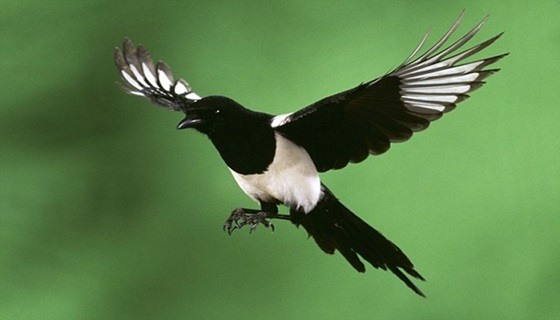
A magpie spreads its wings beautifully.

Super cute baby blackbird image.
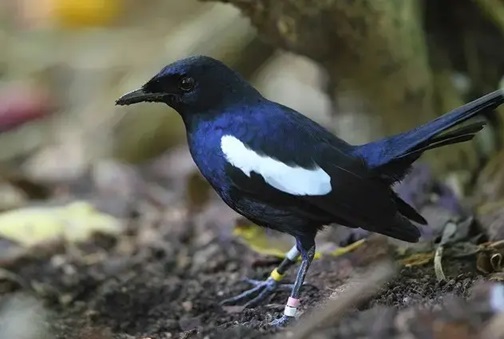
A starling is foraging on the ground.

Image of a mother magpie "feeding" her chicks.
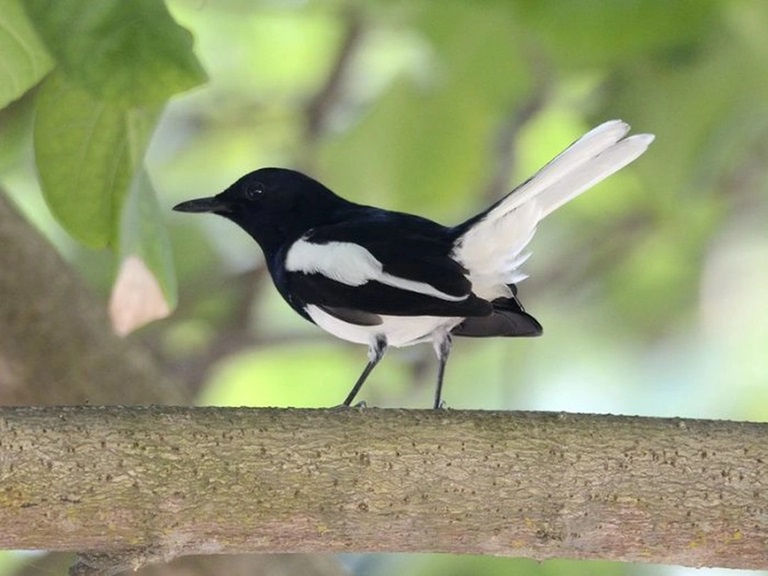
Image of a starling perched on a high tree branch.
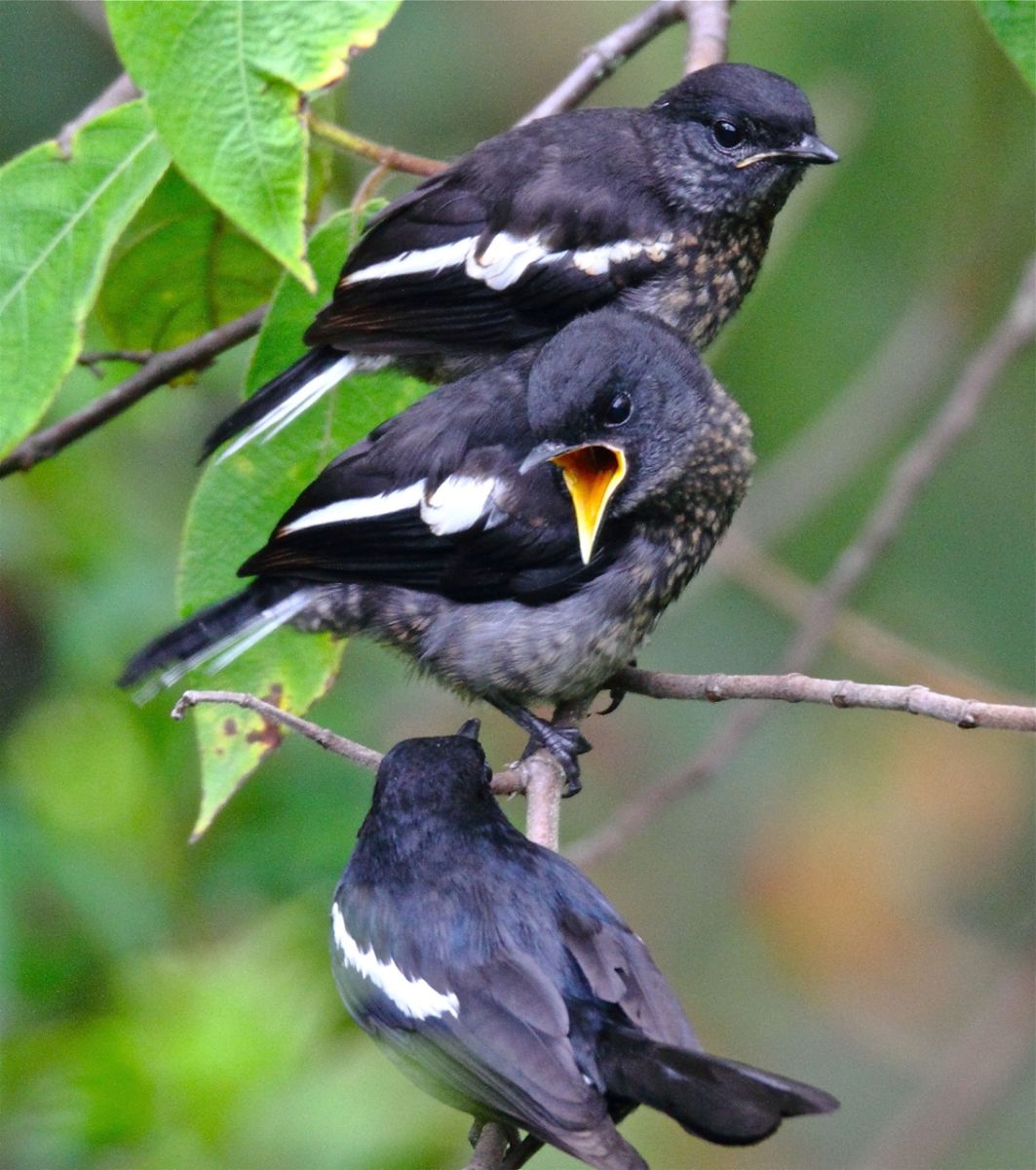
Starlings are perched next to each other in nature.
Through the above article, nicebirds.net has shared all the relevant information about the Blackbird , hoping you have understood and mastered the ignition technique to help the bird sing well and for the longest time.
We believe that whether you are a new bird fancier or a veteran, you will easily "conquer" this special bird species.
Don't forget to visit our Blog section to learn more about many other bird species as well as gain more valuable bird raising experiences!

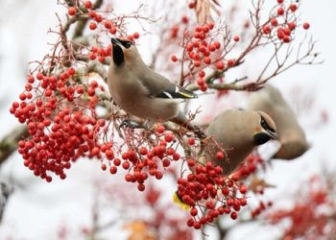

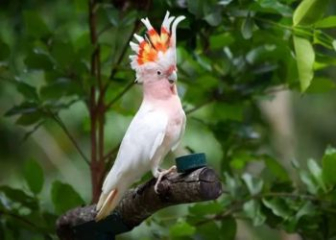
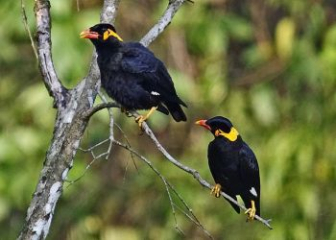
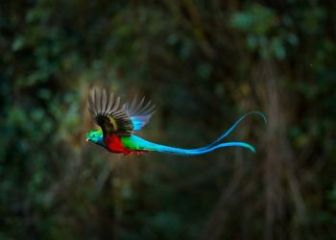





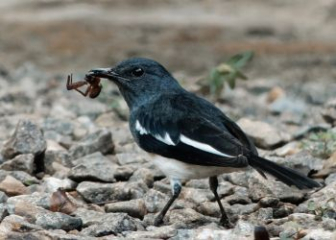
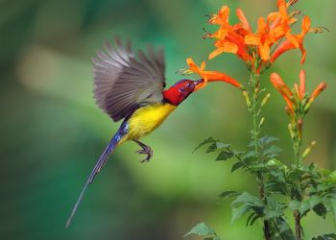


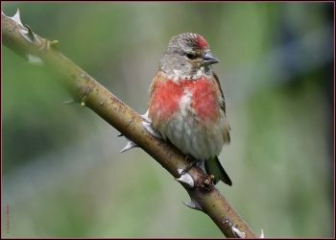
_350x250.jpg)
